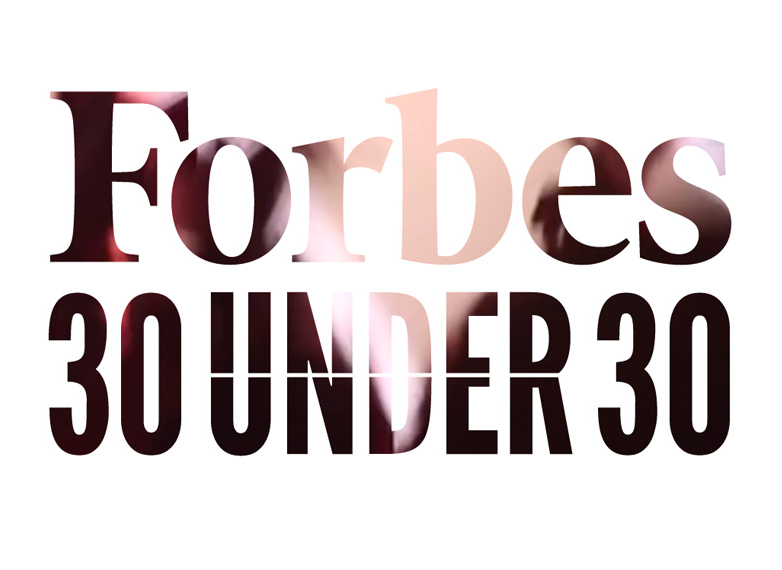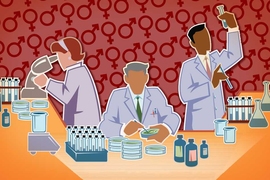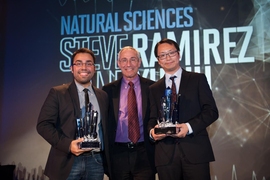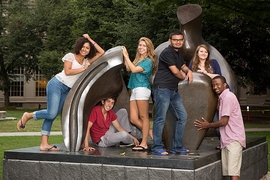Forbes recently released its "30 under 30" lists for 2015. For its fourth annual celebration, the publication has selected 600 movers, makers, and game changers in 20 fields — all under the age of 30.
This year’s lists are populated with numerous MIT faculty, students, and alumni. Read on to learn more about current faculty, postdocs, and students who were among this year’s honorees, and see the MIT Alumni Association's Slice of MIT for a complete list of alumni honorees.
SCIENCE
Canan Dagdeviren, postdoctoral associate, Langer Lab
A postdoctoral associate in the Langer Lab, Dagdeviren is developing implantable electronic chips that are powered by the body, eliminating the need for batteries. In the future, such devices could be used as pacemakers, implantable defibrillators, and cardiac monitors.
Eran Hodis, MD/PhD student, Harvard-MIT Program in Health Sciences and Technology
Hodis has discovered a pair of mutations in the genomes of melanoma cells that is among the most common mutations in all types of cancer. His finding helps explain why cancer cells increase the production of the enzyme telomerase, making the cells virtually indestructible.
Patrick Hsu, postdoctoral fellow, Broad Institute
Hsu’s research has contributed to a new, incredibly accurate way to edit the human genome. Using an engineered version of a protein called Cas9, researchers are able to easily and efficiently add or delete genes in living cells. Hsu’s work is now being used to develop new methods of human gene therapy.
Steve Ramirez, PhD student, Picower Lab
In a significant breakthrough in neuroscience, Ramirez was part of the team that documented the ability to both transform negative memories into positive ones, and create false memories in the brains of mice. Such work is expected to contribute to new treatments for psychiatric disorders such as post-traumatic stress disorder.
Jason Sheltzer, PhD student, Amon Lab
Sheltzer authored a recent study documenting the gender gap in the nation’s biology labs. His research revealed that in the labs of “elite” male faculty — those who have won prestigious awards such as the Nobel Prize — women are greatly underrepresented. This difference was not present in the labs of elite female researchers.
EDUCATION
Vinit Sukhija, graduate student, MIT Sloan School of Management
In addition to being a full-time graduate student at Sloan, Sukhija is the manager of Teach for America’s social entrepreneurship and innovation initiative. In this role, he’s been instrumental in launching new education ventures and forging strategic partnerships with leading education backers such as Imagine K12 and NewSchools Venture Fund.
ENERGY
Sara Volz, Class of 2017
Before arriving at MIT, Volz built a lab in her bedroom to research the use of algae to make biofuels. Using herbicide to kill off the weaker strains of algae, she produced a strain of “super producers” that increased her algae’s oil production by 300 percent. Volz’s research earned her the top prize in the 2013 Intel Science Talent Search.
ENTERPRISE TECHNOLOGY
Fadel Adib SM '13, PhD student, Computer Science and Artificial Intelligence Laboratory, NETMIT Lab
A member of the Networks@MIT group, Adib helped created WiTrack, a spin on Wi-Fi that uses a radio signal — just 1 percent as strong as Wi-Fi and .01 percent of your smartphone's signal — to track movements with incredible accuracy. Recently the team demonstrated they can detect gestures as subtle as the rise and fall of someone's chest, allowing them to determine a person's heart rate with 99 percent accuracy. Such research holds promise for health-tracking apps, baby monitors, and military and law enforcement purposes.
HEALTH CARE
Nikhil Agarwal, assistant professor, Department of Economics
Agarwal studies the empirics of matching markets, including the matching system that determines where doctors do their medical residencies. He has created models showing that a limited number of positions at programs that provide the best training results in prestigious hospitals paying less than they should.
Alex Bick, MD/PhD student, Harvard-MIT Program in Health Sciences and Technology
Bick uses computers to analyze the vast amounts of genetic data produced by scientists and physicians. Among his findings: the presence of different mutations influence how people respond to high-blood-pressure medications. Blick is the author of 15 papers, and his work has been published in Science, Nature Genetics, and the Journal of the American Medical Association.
Christopher Lee, MEMP PhD student, Harvard-MIT Program in Health Sciences and Technology
Lee is a cofounder of Recon Therapeutics, which has created a user-friendly device for self-administering biologic injections. Lee’s academic research is focused on helping patients expedite the passage of urinary stones, a condition that affects more than 12 percent of men and 6 percent of women in the U.S.









